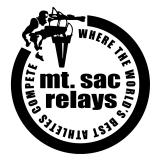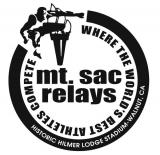Folders |
Introducing the Brooks PR Mile (PR Invite Qualifier) at Mt. SACPublished by
Hello!
The iconic Mt. SAC Relays are nearly here, and in preparing for some of the most impressive races of the outdoor season, we’re introducing the Brooks PR Mile!
The fastest two boys and the fastest two girls in the mile run at Mt. SAC will automatically qualify for the 2014 Brooks PR Invitational.
They’ll join the rest of the invitees on the track on June 21 in Seattle. Invites to the meet go out now through the rest of the track season.
Brooks begins sponsoring the prestigious Mt. SAC Relays and Mt. SAC Cross Country Invitational this year. In conjunction with the PR Invitational, Inspiring Coaches Program and other meet sponsorships, Mt. SAC deepens the number of ways Brooks is committed to the running, particularly in inspiring young runners to participate and compete in the sport.
If you have questions about the Brooks PR Mile, the PR Invite or our sponsorship of the Mt. SAC Relays, please let me know.
Derek Lactaoen
16 comment(s)
|





